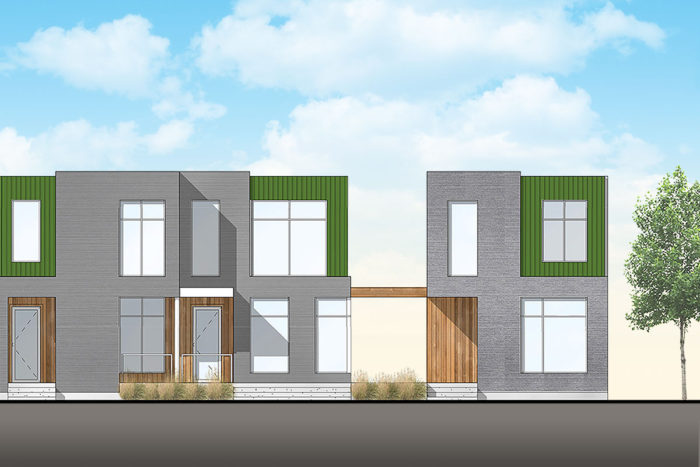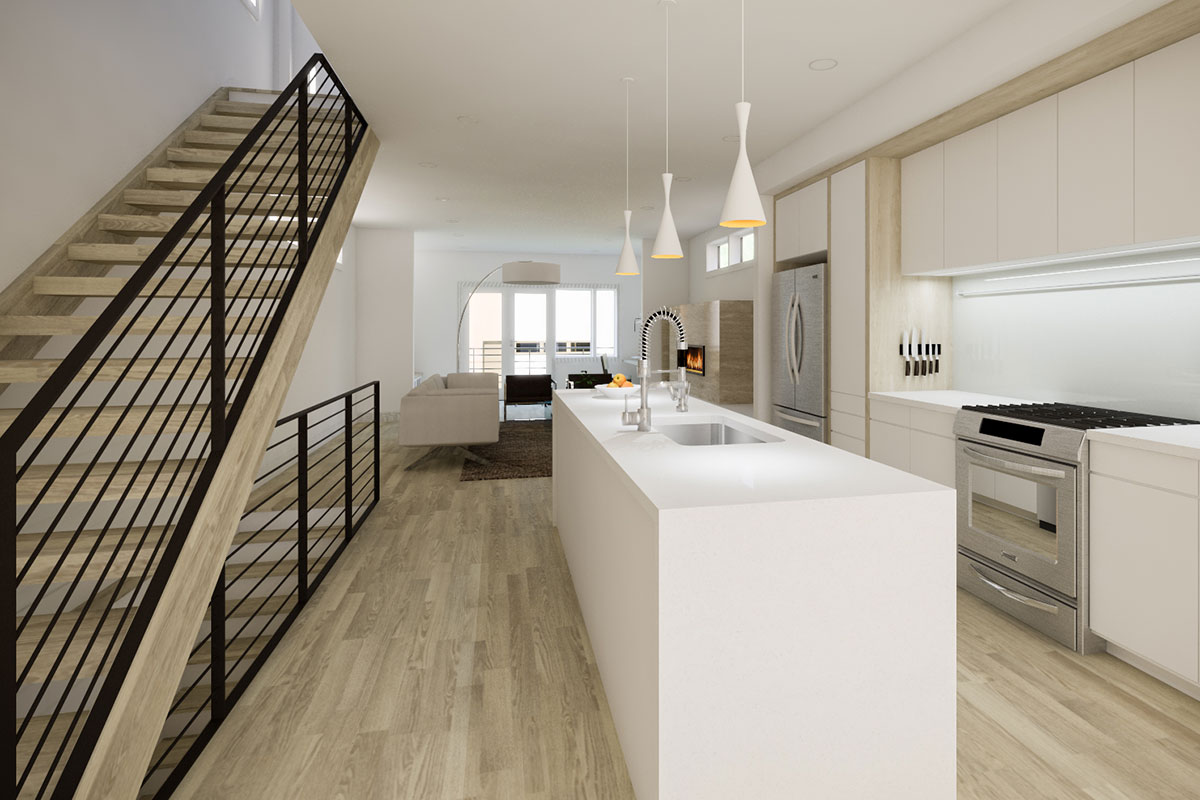Mixed-income housing development to boost Forest Park Southeast neighborhood
Washington University redevelopment group leading revival
 Rise Community Development
Rise Community DevelopmentShown is the proposed front view of Adams Grove, a mixture of townhomes and garden apartments to be developed by the nonprofit Rise Community Development, in the Forest Park Southeast neighborhood. Plans include building 50 affordable housing units in the thriving area near the Washington University Medical Campus.
Construction of more than 150 mixed-income housing units is planned to begin later this year in the Forest Park Southeast neighborhood, bordering the Washington University Medical Campus. The $27 million project will be led by Rise Community Development and Unify Grove Development.
The housing development is sponsored by the Washington University Medical Center Redevelopment Corporation (WUMCRC), a public-private partnership between Washington University School of Medicine and BJC HealthCare.
Over the past 20 years, WUMCRC has invested more than $35 million in Forest Park Southeast, supporting neighborhood investments in safety and security, jobs, education, and the development of the entertainment, restaurant and commercial district along Manchester Avenue, also known as the Grove. A large portion of WUMCRC’s investment entailed purchasing and holding properties in the neighborhood, with the ultimate goal of attracting interested developers with strong records in redeveloping and strengthening mixed-income, diverse communities.
“This project represents years of very careful planning to uphold our commitment to support the Forest Park Southeast neighborhood while providing a range of housing options for community members and employees of the medical center,” said Henry S. Webber, executive vice chancellor for administration at Washington University and chair of the WUMCRC board. “Dense, diverse, mixed-income communities are key to St. Louis’ future success.”
The Forest Park Southeast neighborhood is bordered by Interstate 44 to the south, Kingshighway Boulevard to the west, Interstate 64/Highway 40 to the north and Vandeventer Avenue to the east. The new housing project is focused south of Manchester Avenue, which bisects the area.
Rise, one of the region’s top nonprofit developers of affordable and market-rate housing, plans to build 50 townhomes and garden apartments. These affordable units will replace many of the boarded-up buildings and empty lots on the 4400 blocks of Vista, Norfolk and Swan Avenues. Called Adams Grove, the project will feature contemporary design and sustainable building techniques and is expected to be completed in 2018.
“Our commitment to the Forest Park Southeast neighborhood extends nearly two decades,” said Stephen Acree, president of Rise Community Development. “During that time, the neighborhood has become a thriving, walkable area with great amenities and, most important, it has become more economically, culturally and racially diverse. We hope our new development south of Manchester can serve as a model for others seeking to redevelop neighborhoods while preserving their overall diversity.”
 Unify Grove Development
Unify Grove DevelopmentUnify Grove Development, a leading builder of market-rate housing, plans a three-year, three-phase construction of 46 new houses. Unify also plans to build three apartment buildings with a total of 60 units. The new houses and apartments are expected to be completed in 2019.
“This is an exciting project,” said Chris Hulse, a partner at Unify Grove Development. “Flanked by one of the largest employers in the region as well as Forest Park and other cultural institutions, the Grove is enjoying a rebirth, but few options exist for people who want to live in a new home. We want to help this community flourish, and having new housing is a key part of that.”
Forest Park Southeast has experienced major revitalization in the past decade. This growth reflects the continued expansion of the Medical Campus as well as the nearby development of the Cortex Innovation Community, which has become one of the region’s largest economic engines.
“Our entire medical complex continues to evolve in response to the health needs of our community,” said Richard J. Liekweg, BJC HealthCare president and vice chair of the WUMCRC board. “As our neighbor to the south, Forest Park Southeast is thriving. Along with the nearby cultural institutions in Forest Park, the Central West End and the Cortex district, this vibrant growth makes a powerful contribution to the economic heart and health of the city and the St. Louis region.”
With the positives of revitalization have come increasing concerns about maintaining affordability and access to Forest Park Southeast for long-term and lower-income residents. WUMCRC has aimed to prevent displacement of lower-income residents by selling, at no financial gain, its properties to developers who have pledged to preserve affordable housing.
“The two housing developments will comprise one of the region’s largest urban mixed-income housing developments,” said Brian K. Phillips, WUMCRC’s executive director, who has worked to make Forest Park Southeast and the Central West End safer and more economically viable. “Affordable housing is key to stabilizing neighborhoods like Forest Park Southeast.”
Enhancing Forest Park Southeast with new, affordable housing is a win-win for the neighborhood and employees who want to live close to work, added David H. Perlmutter, MD, executive vice chancellor for medical affairs and dean of Washington University School of Medicine. “We’re excited about the vibrancy this housing brings to the area.”







